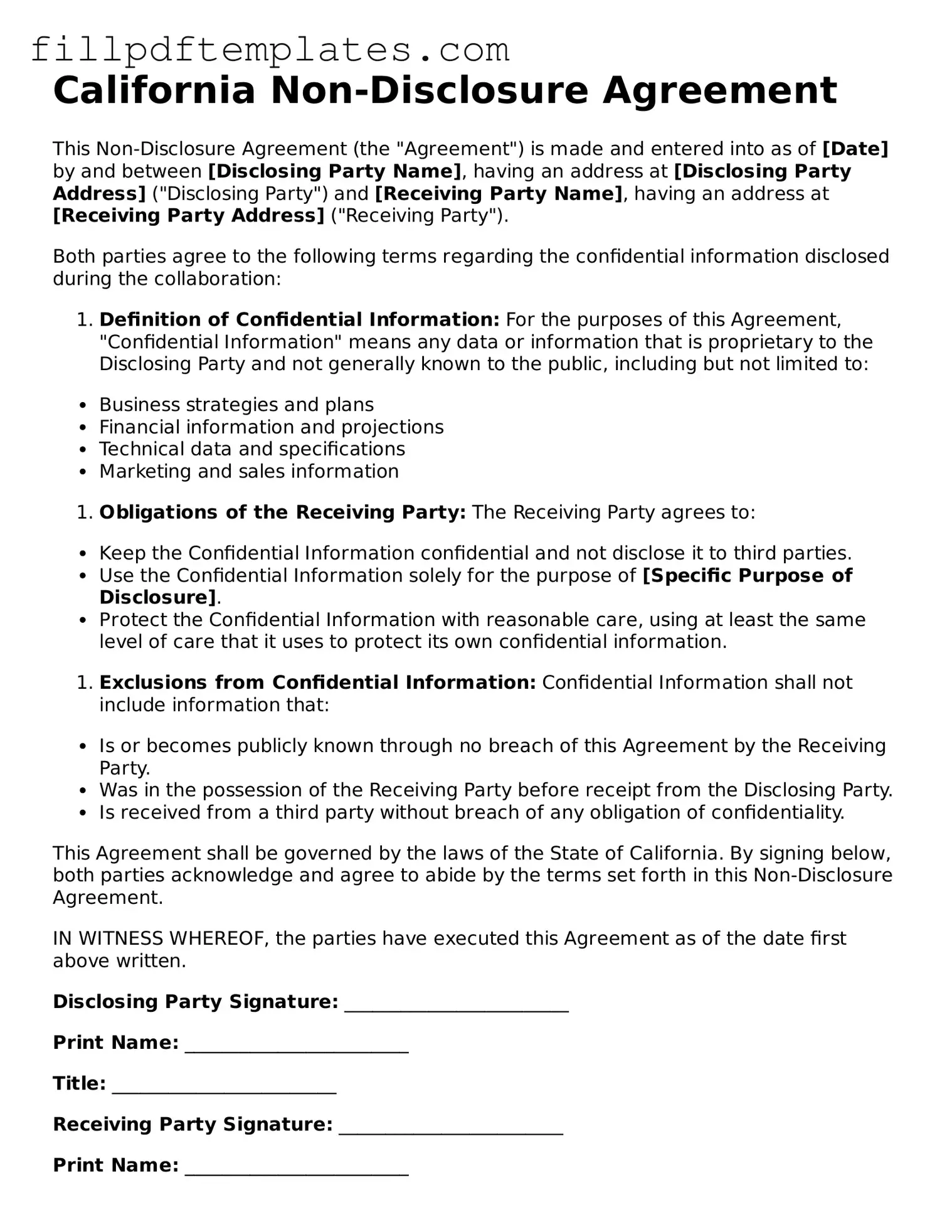California Non-Disclosure Agreement
This Non-Disclosure Agreement (the "Agreement") is made and entered into as of [Date] by and between [Disclosing Party Name], having an address at [Disclosing Party Address] ("Disclosing Party") and [Receiving Party Name], having an address at [Receiving Party Address] ("Receiving Party").
Both parties agree to the following terms regarding the confidential information disclosed during the collaboration:
- Definition of Confidential Information: For the purposes of this Agreement, "Confidential Information" means any data or information that is proprietary to the Disclosing Party and not generally known to the public, including but not limited to:
- Business strategies and plans
- Financial information and projections
- Technical data and specifications
- Marketing and sales information
- Obligations of the Receiving Party: The Receiving Party agrees to:
- Keep the Confidential Information confidential and not disclose it to third parties.
- Use the Confidential Information solely for the purpose of [Specific Purpose of Disclosure].
- Protect the Confidential Information with reasonable care, using at least the same level of care that it uses to protect its own confidential information.
- Exclusions from Confidential Information: Confidential Information shall not include information that:
- Is or becomes publicly known through no breach of this Agreement by the Receiving Party.
- Was in the possession of the Receiving Party before receipt from the Disclosing Party.
- Is received from a third party without breach of any obligation of confidentiality.
This Agreement shall be governed by the laws of the State of California. By signing below, both parties acknowledge and agree to abide by the terms set forth in this Non-Disclosure Agreement.
IN WITNESS WHEREOF, the parties have executed this Agreement as of the date first above written.
Disclosing Party Signature: ________________________
Print Name: ________________________
Title: ________________________
Receiving Party Signature: ________________________
Print Name: ________________________
Title: ________________________
